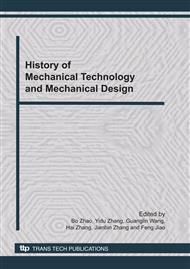p.404
p.408
p.413
p.417
p.421
p.426
p.431
p.436
p.440
Study on the Stress Field in Ultrasonic Grinding Engineering Ceramics
Abstract:
The mechanical model of stress field was established in grinding with/without ultrasonic vibration assistance, based on indentation fracture mechanics. Compared with the stress field in conventional grinding, the research has shown that the grinding stress field changes periodically with the vibration process of the moving grains in ultrasonic grinding. In a vibration cycle, the grains interfere with the workpiece within the time of T+Δt and cut off the material from the workpiece surface. Meantime, the large impact force between the grinding wheel and the workpiece results in stress field on the ground surface. In other period of vibration cycle, the grains are detached from the workpiece surface, and there exists no interaction between them. The grinding force disappears, so does the grinding stress field.
Info:
Periodical:
Pages:
421-425
Citation:
Online since:
November 2010
Authors:
Keywords:
Price:
Сopyright:
© 2011 Trans Tech Publications Ltd. All Rights Reserved
Share:
Citation:


